Inspection Criteria
Single Braid
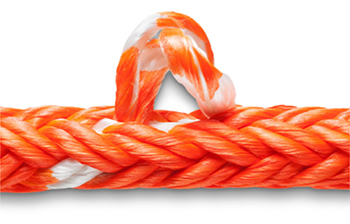 Protruding StrandTHE REPAIR: Work the strand back into the rope as soon as you notice it by carefully tugging on adjacent strands until the excess is distributed evenly. A protruding strand in service could easily snag or break, causing further complications. |
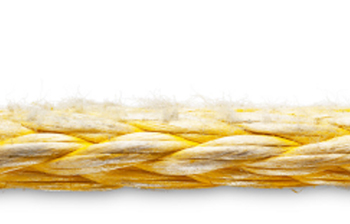 AbrasionTHE REPAIR: There isn’t a repair for abrasion, but you should still inspect for it. If the strength loss is minimal, go ahead and continue use. If the strength loss is moderate, consult Yale or retire the rope. If it’s excessive, always retire. |
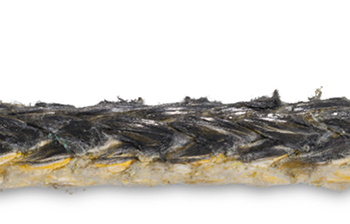 Melting or GlazingTHE REPAIR: If possible, remove the affected section and re-splice with an end-for-end splice. Otherwise – or if you suspect the rope has experienced shock loading – retire the rope. |
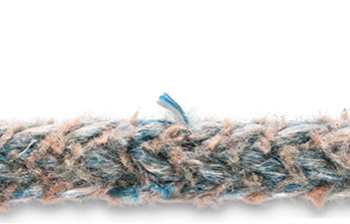 Cut StrandTHE REPAIR: If possible, remove the affected section and re-splice with an end-for-end splice. If re-splicing is not possible, retire the rope. As a general rule, 12-strand ropes should be retired when more than three broken strands are visible. |
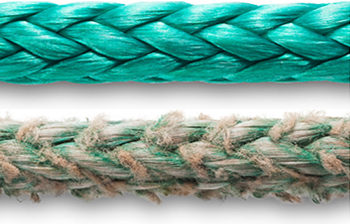 Diameter ChangeTHE REPAIR: If the diameter is reduced by less than 10 percent, it is still able to remain in service. If the diameter reduction is 11—20 percent, downgrade the rope. Should the diameter reduction from new to used exceed 20 percent, retire the rope. |
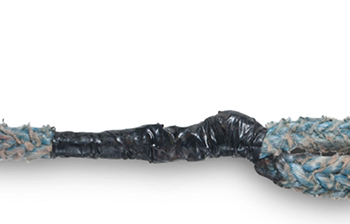 Incorrect End to End SpliceTHE REPAIR: Re-splice the rope correctly. |
Balanced Double Braid
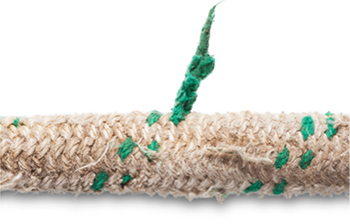 Protruding Strand
|
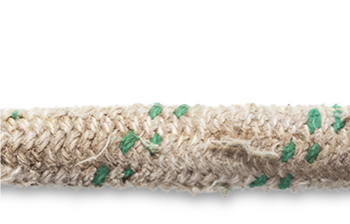 Deeply Abraded Spot
|
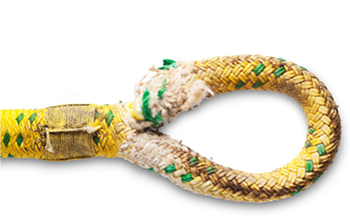 Worn-Out Eye
|
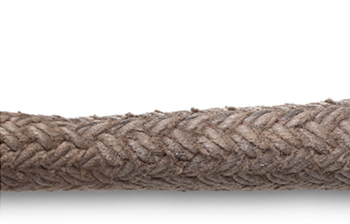 Discontinuity in Rope DiameterTHE REPAIR: Open the rope sleeve to remove and inspect the core. If the core is parted, you will need to retire the rope. |
High-Modulus Double Braid
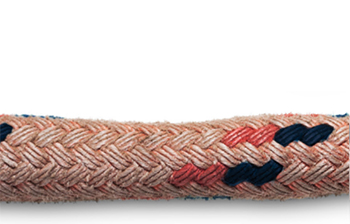 Flat Spot Inside RopeTHE REPAIR: Open the rope sleeve to remove and inspect the core. If the core is parted, you will need to retire the rope. |
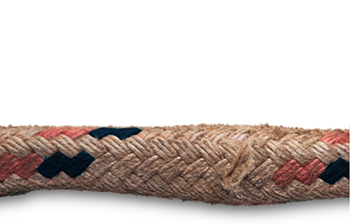 Bumps on CoverTHE REPAIR: This rope can be returned to service. Simply flex the rope to remove the compression. |
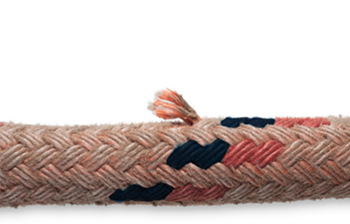 Cut StrandTHE REPAIR: As long as the core remains covered, you can repair cut strands by whipping into place, without impact on the strength. |
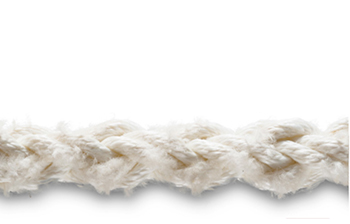 Abraded SpotTHE REPAIR: As long as the core remains covered, you can repair cut strands by whipping into place, without impact on the strength. |
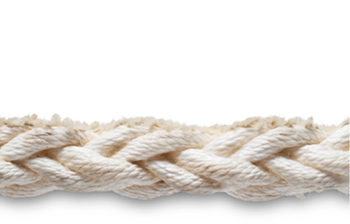 Cut StrandTHE REPAIR: If possible, remove the affected section and re-splice with an end-for-end splice. If re-splicing is not possible, retire the rope. |
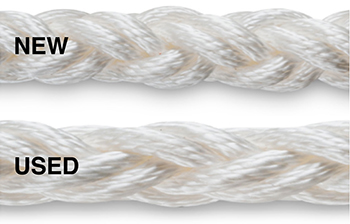 Brait Lay Length ChangeTHE REPAIR: If permanent deformation results in a longer lay length in excess of 15 percent, retire the line. |
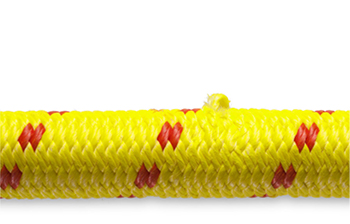 Protruding StrandTHE REPAIR: To repair a protruding strand on a parallel core rope, you’ll need to cut off excess strand, execute a careful heat seal and whip with twine. |
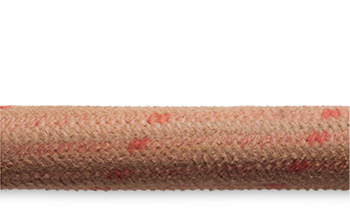 Abraded Spot 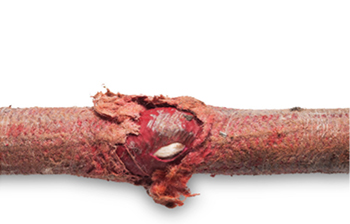 Deep abrasions through the rubber but not into the core 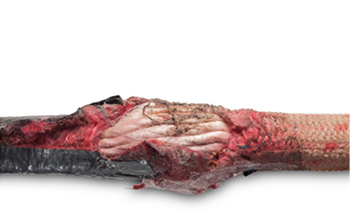 Deep abrasions through the rubber and damaging the core AbrasionTHE REPAIR: To repair an abraded spot, evaluate the depth of the abrasion. If the rubber jacket is not compromised, whip and return to service. If you notice deep abrasions through the rubber but not into the core, you can repair the rubber layer and then whip the area. Abrasions and cuts through the rubber layer and damaging the core should be cut out and repaired with TechJoin™. |
|



